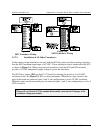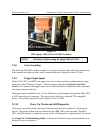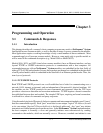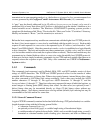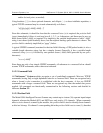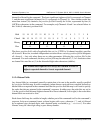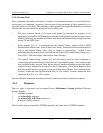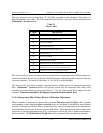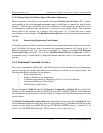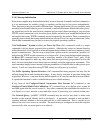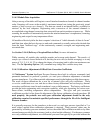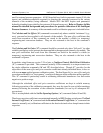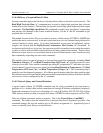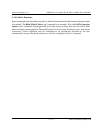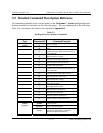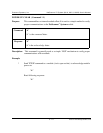
Pressure Systems, Inc. NetScanner™ System (9016, 9021, & 9022) User’s Manual
www.PressureSystems.com
3 - 7
3.1.3.2 Interpreting Gain Values (Span Calibration Adjustment)
When a module is instructed to execute the command Calculate and Set Gains (‘Z’), a datum
corresponding to the calculated gain correction term (or coefficient) is returned for each affected
channel. Like the offset coefficient, each gain coefficient is stored internally, and will be used in
all subsequently calculated data conversions, to correct for gain change effects. The command
returns them in the response (as a unitless scale factor near 1.0) to allow the user to make
reasonableness checks on them. The Read Internal Coefficients (‘u’) command will return them on
demand.
3.1.3.3 Interpreting Engineering Units Output
All modules perform all internal pressure calculations in engineering units of pounds per square inch
(psi). By default, all pressure data in responses and command parameters will also be in psi. A
different engineering unit (e.g., kPa) may be obtained by changing an internal EU Pressure
Conversion Scaler (normally 1.0). See the “Read/Download Internal Coefficients” (‘u’/‘v’)
commands (array 11, coefficient 01). Change this default multiplier value (1.0) to obtain units other
than psi.
3.1.4 Functional Command Overview
The various commands for 9016, 9021, and 9022 modules are best introduced by classifying them
into functional groups and then describing how each function is carried out in a typical system. The
following functions are defined for this purpose:
! Start-up Initialization
! Scan List Definition for Acquisition
! Calibration Adjustment of Engineering Unit Correction Coefficients
! Acquisition/Delivery of Data to Host
! Network Query and Control
Please look ahead to Table 3.1, labeled NetScanner
™
Commands, in Section 3.2, for a quick-look
summary of all commands available to the Models 9016, 9021, and 9022 modules. Each command
may be referenced by both its functional title and by its command id in the functional discussion sub-
sections below.
The Detailed Command Description Reference immediately follows the table in Section 3.2, with
each command description occupying a page (or more if necessary). Command descriptions in this
section (as in the table) are ordered first by type (TCP/IP then UDP/IP), then by “command id” in
ASCII order (UPPERCASE letters (A .. Z) first, then lowercase letters (a .. z)) .



